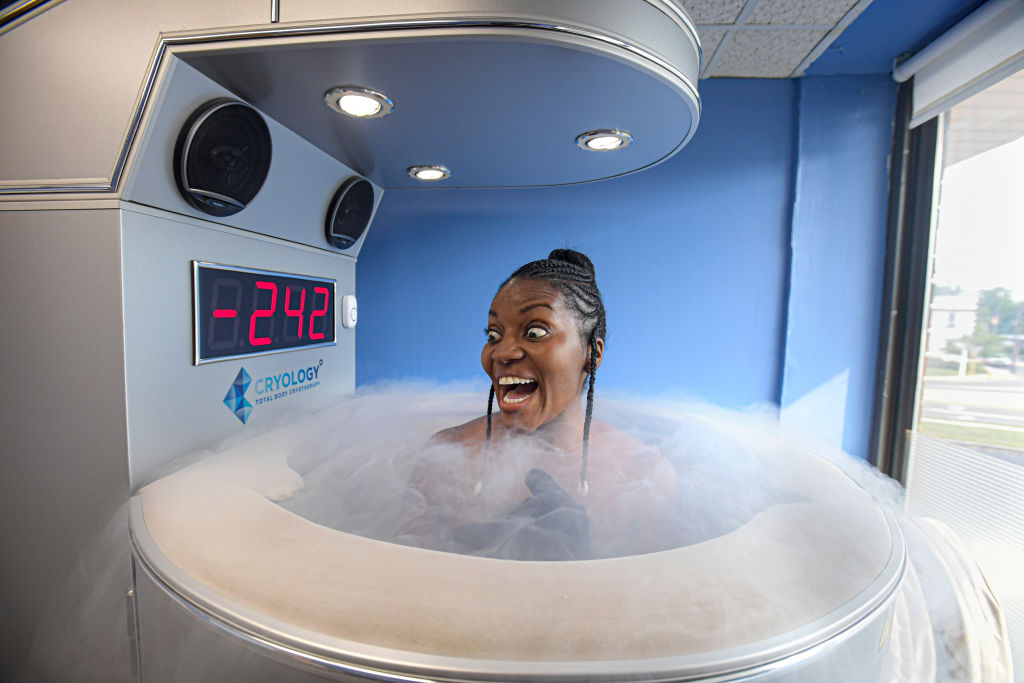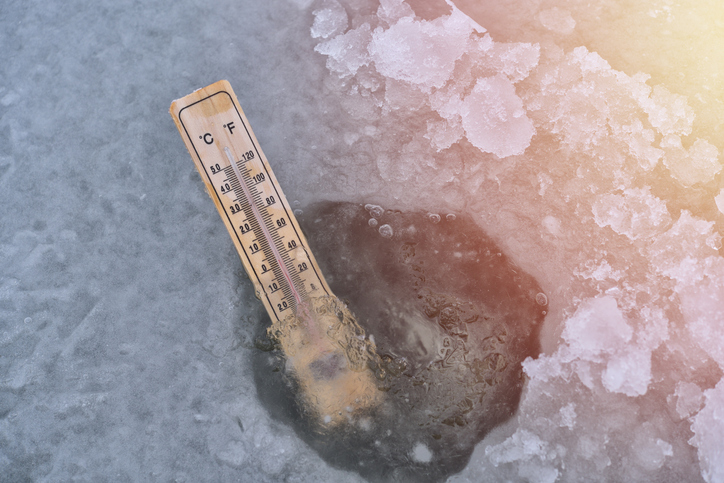Cryotherapy 101: Your Questions About Cold Therapy, Answered
Cryotherapy 101: All Your Questions About Cold Therapy, Answered
Share the post
Share this link via
Or copy link

Source: Newsday LLC / Getty
By now, you’ve probably heard of cryotherapy or even received promotional offers for a free or discounted session at a local spa. Photos of cryotherapy look almost futuristic, like a human stepping out of a chamber that froze their body through the apocalypse. In reality, cryotherapy isn’t so scary or even fringe. In fact, forms of cryotherapy as we know it today date back to the 19th century, and other methods that involved extreme cold to treat ailments date back to the ancient Egyptians, according to a study from the Journal of the Royal Society of Medicine published in the National Library of Medicine.
If you’ve been curious about trying cryotherapy but need more information, here’s a look at what you can expect from this treatment.
What Is The Cryotherapy Experience?

Source: Daniel Chetroni / EyeEm / Getty
Cryotherapy is a non-medical treatment that usually takes place in a spa or a comparable setting. There are two kinds: local cryotherapy and whole body cryotherapy (WBC). Each involve exposure to extreme cold, and the air is cooled using liquid nitrogen. In local cryotherapy, you might have cold temperature applied to a specific part of the body like the back or face.
In WBC, you either step into an enclosed chamber that has an opening for your head, or you step into a cooled room and receive head-to-toe treatment. The chamber or room will be set to somewhere between negative 220 degrees Fahrenheit to negative 300 degrees Fahrenheit. You will remain in the chamber or room for two to four minutes.
Cryotherapy is often confused with ice baths and cold water therapy but these are not the same. Cold therapy uses cold air while ice baths or cold water therapy use cold water. However, they can reportedly offer some of the same benefits.
- Terrence Howard Bashed For Rejecting Marvin Gaye Biopic Over Gay Kiss Scene
- Why Actress Amber Iman Calls ‘Goddess’ A Love Letter To Black Women In Theater [Exclusive]
- Love Or Liability? How Romantic Relationships Really Impact Your Wallet
- Wowzer! 10 Sex Games To Build Trust And Intimacy With Your Partner
- Why Women Get The ‘Ick’ More Than Men — It Might Just Prolong Their Lives
Benefits

Source: DjordjeDjurdjevic / Getty
Cryotherapy has long been used to help prevent certain illnesses, treat current conditions and manage pain. There are some reported benefits that have not been proven, but the below are benefits that have been supported by medical research. This treatment is most effective when done on a regular basis.
Pain Reduction
Cryotherapy has been found to be an effective treatment for pain relief in a number of conditions. Studies have found that it can provide relief from migraine pain. One study published in the National Library of Medicine found that placing an ice pack on the neck specifically can reduce migraine pain.
Doctors often use cryotherapy to help athletes recover from injuries by placing small freezing cold probes near the injured area.
Cryotherapy has also been found to alleviate pain from arthritis. Additionally, a study published in the National Library of Medicine shows that cryotherapy for arthritic patients can also help make physical therapy more successful.
Treat Depression And Anxiety
Some experts state that cryotherapy can effectively manage symptoms of depression and anxiety. One study published in the National Library of Medicine found that regular treatment significantly reduced symptoms of depression and anxiety in participants of nearly all ages when done together with traditional psychopharmacotherapy (the use of psychoactive drugs to treat mental and emotional disorders).
Prevent Cognitive Illness
Some studies published in CryoLetters, an international journal on cold temperature sciences, have shown that cryotherapy can combat the inflammation and oxidative stress that are co-current with dementia and Alzheimer’s disease. This is because it fights inflammation and boosts antioxidant levels in the body.
Treat Some Skin Conditions
The antioxidant and anti-inflammatory benefits of cryotherapy can also fight dermatitis and inflammatory skin disease. The National Eczema Association reports that there isn’t a one-size-fits-all treatment for topical skin conditions like eczema. Some patients respond best to cold, while others respond best to hot temperatures.
Aid In Weight Loss
One study published in the Journal of Clinical Medicine examined menopausal women who underwent 20 sessions of cryotherapy while battling abdominal obesity. The study found a significant reduction in total BMI and belly fat after 20 sessions of cryotherapy.
- Terrence Howard Bashed For Rejecting Marvin Gaye Biopic Over Gay Kiss Scene
- Why Actress Amber Iman Calls ‘Goddess’ A Love Letter To Black Women In Theater [Exclusive]
- Love Or Liability? How Romantic Relationships Really Impact Your Wallet
- Wowzer! 10 Sex Games To Build Trust And Intimacy With Your Partner
- Why Women Get The ‘Ick’ More Than Men — It Might Just Prolong Their Lives
Cryotherapy Safety Concerns

Source: STEVE HORRELL/SPL / Getty
While cryotherapy is safe for most individuals, the following people should avoid it:
- Pregnant women
- Children
- People with heart conditions
- People with very high blood pressure
- People with narcolepsy (you should not fall asleep during cryotherapy)
- Terrence Howard Bashed For Rejecting Marvin Gaye Biopic Over Gay Kiss Scene
- Why Actress Amber Iman Calls ‘Goddess’ A Love Letter To Black Women In Theater [Exclusive]
- Love Or Liability? How Romantic Relationships Really Impact Your Wallet
- Wowzer! 10 Sex Games To Build Trust And Intimacy With Your Partner
- Why Women Get The ‘Ick’ More Than Men — It Might Just Prolong Their Lives
![Why Actress Amber Iman Calls 'Goddess' A Love Letter To Black Women In Theater [Exclusive]](https://ionemadamenoire.staging.go.ione.nyc/wp-content/uploads/sites/9/2025/05/17468188616796.png?strip=all&quality=80&w=102&crop=0,0,100,153px)






